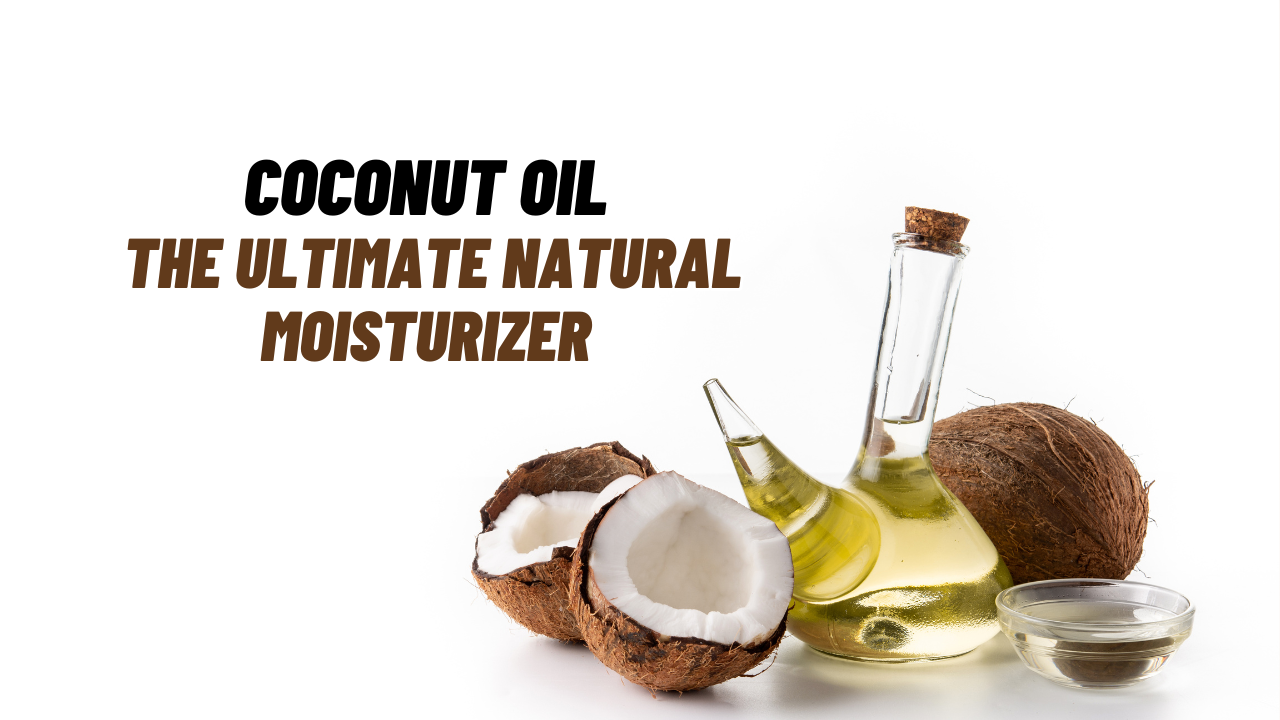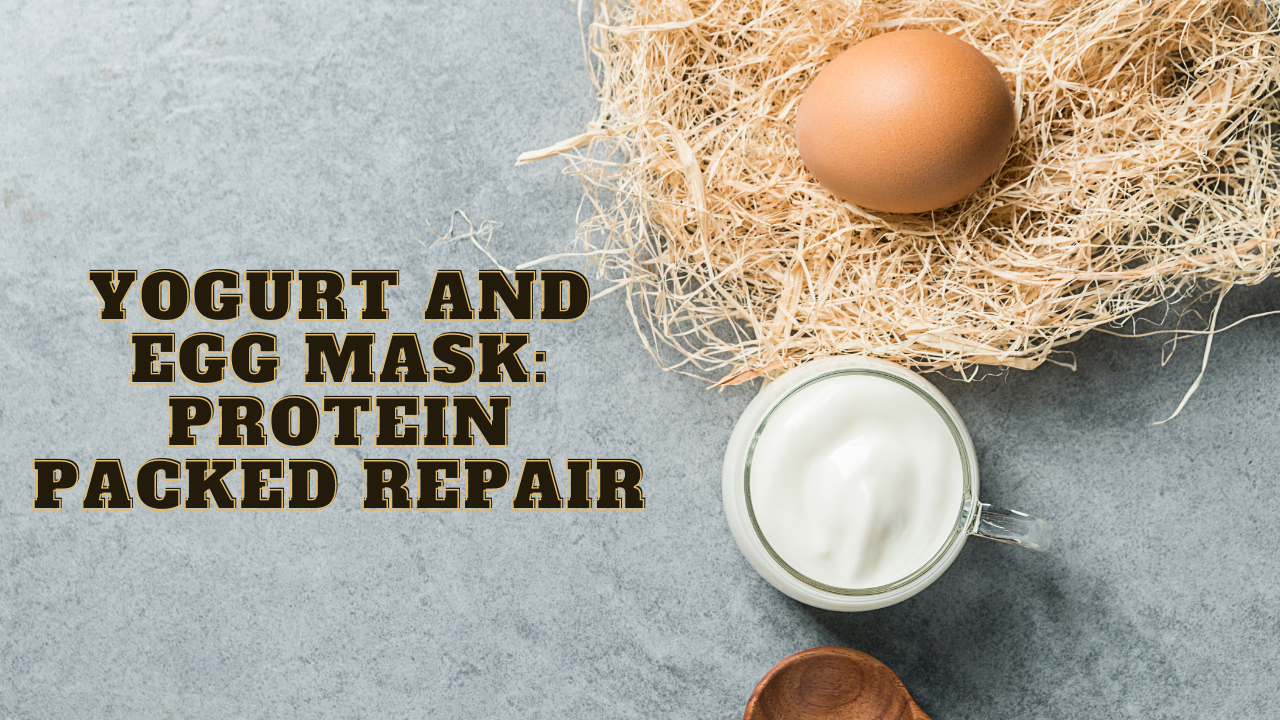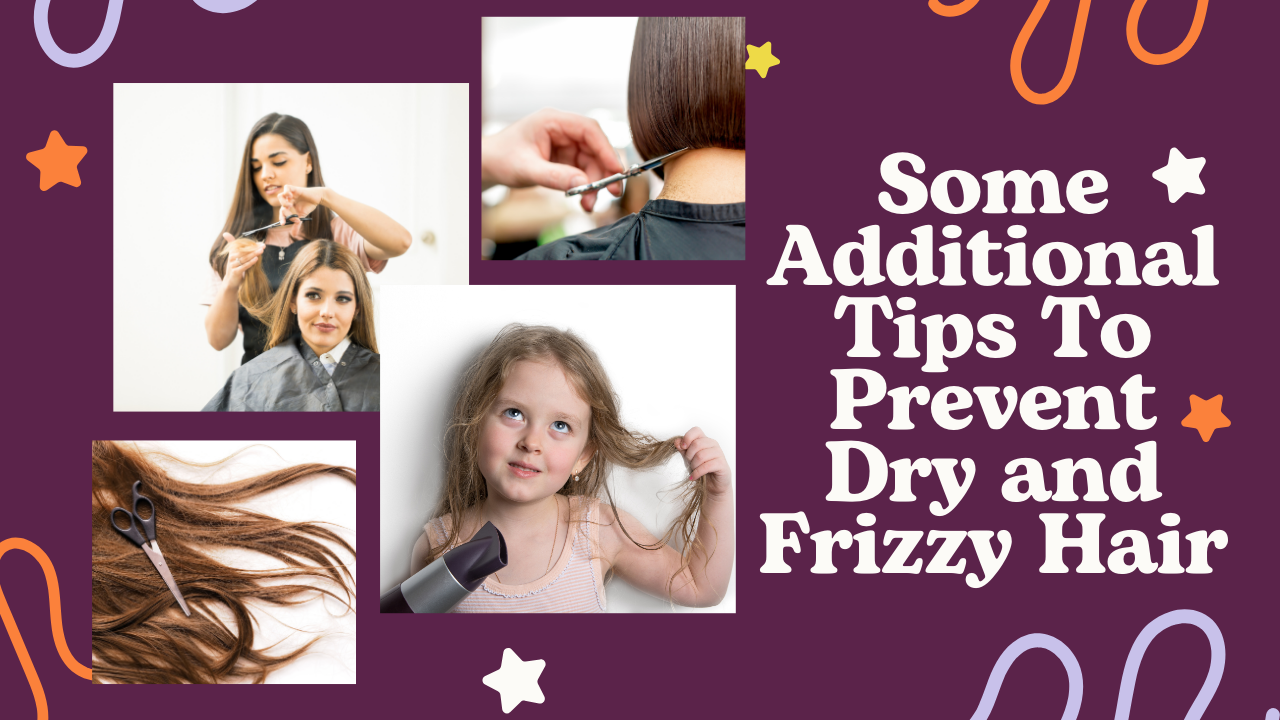Dry and damaged hair irritates many people, leading to frizz breakage, frizz, and an unattractive appearance. The market is overflowing with products for hair that promise to replenish moisture and shine. However, many have harsh chemicals that may cause much more damage than benefit in the long run. Natural hair hydration treatments are a viable alternative if you’re looking for a more gentle and sustainable method. This article will discuss the desirable remedies for natural hydration that can help damaged and dry hair and will benefit you in restoring the health and vitality of your hair.
Understanding the Causes of Dry and Damaged Hair
Before beginning the treatments, it’s essential to comprehend the underlying causes of damaged and dry hair. Hair can dry out and become damaged due to a variety of reasons, such as:
- Environment-related Factors Exposure to sunlight, pollutants, and severe weather conditions can deprive hair of its moisture-rich natural qualities, causing drying and chapping.
- Hair Styling: Frequently using heated tools such as flat irons, blow dryers, and curling irons could weaken hair shafts, leading to dryness and breakage.
- Chemical treatment: Hair coloring, relaxing, and perming involve chemicals that could harm hair’s structure, making it more susceptible to dryness, brittleness, and dryness.
- Unprofessional Hair Care: Overwashing with harsh shampoos or products or not properly conditioning your hair can remove your hair’s natural oils, which can cause dryness.
- Nutrient deficiencies: Insufficient vital nutritional elements in your food, including minerals, vitamins, and healthy fats, could affect the health of your hair, making it more prone to damage and dryness.
Knowing the causes of hair loss can help pinpoint the issue and select one of the best natural remedies.
Coconut Oil: The Ultimate Natural Moisturizer

Coconut oil is frequently hailed as one of the desirable natural solutions for damaged and dry hair, and with good reason. High in fatty acids, coconut oil can penetrate the hair shaft deeply, providing intensive moisturization and nourishment. It also helps reduce the loss of protein in hair, which is vital to maintaining its strength and elasticity.
How to Use Coconut Oil:
- A small portion of coconut oil is applied to the palms of your fingers until it is liquid.
- Uniformly apply the oil to dry or damp hair and focus on the ends of hair where damage is typically more severe.
- Allow the oil to remain on for at least 30 minutes or overnight for more intense treatment.
- Shampoo your hair with gentle shampoo to get rid of the oil. Then, follow with a conditioner, if necessary.
- To get accurate results and an excellent outcome, apply this treatment at least once every week.
Coconut oil moisturizes and gives softness and shine. It is a must-have treatment for damaged, dry hair.
Aloe Vera: Soothing and Hydrating
Aloe Vera is a well-known ingredient for its soothing and nourishing properties, which make it an excellent treatment for damaged and dry hair. The aloe Vera plant contains minerals, vitamins, and enzymes that help heal damaged hair and restore moisture balance.
How to Use Aloe Vera:
- Using an aloe leaf, you can get a fresh gel of aloe vera. You can also use a store gel if fresh aloe isn’t readily available.
- Use the gel straight on your hair and scalp, and massage it with your fingertips.
- Let it sit for between 30 and one hour, and then rinse thoroughly using lukewarm water.
- Mixing aloe gel with drops of essential oil or carrier oil to achieve extra water retention is also possible.
- Apply this treatment at least once every week to get an excellent outcome.
Aloe vera can calm the scalp, minimize irritation, and replenish moisture in your hair, leaving it smooth and manageable.
Avocado Mask: A Nutrient-Rich Treatment
Avocado isn’t just a tasty superfood; it’s also an excellent natural treatment for damaged and dry hair. High in healthy fats, vitamins B and E, and proteins, avocado can help nourish and strengthen hair and make it more resistant to damage.
How to Use an Avocado Hair Mask:
- Mash an avocado with some ripeness until it turns silky and soft.
- Mix with one tablespoon of coconut or olive oil to increase the moisturizing qualities of the mask.
- Apply the mask on damp hair, focusing on the ends and mid-lengths.
- Cover your hair with a shower cap, and leave the cap in place for 30 minutes up to an hour.
- Rinse the mask with the water. Shampoo and condition as usual.
- To get the perfect results For perfect payoff, apply this mask every week for accurate results.
The avocado mask offers rich hydration and helps repair damaged hair and restore hair’s natural softness and shine.
Honey and Olive Oil Treatment: A Humectant Duo
Honey is a natural humectant, which means it attracts and stores moisture. This makes it a perfect ingredient for moisturizing dry hair. Combined with olive oil, which is high in antioxidants and healthy fats, this treatment could benefit, store, and revive damaged and dry hair.
How to Use Honey and Olive Oil:
- Mix two tablespoons honey and two tablespoons olive oil until well blended.
- Apply the mix to damp hair, focusing on the ends and arid areas.
- Cover your hair with a shower cap, and let the treatment run for 30 minutes to one hour.
- Cleanse thoroughly with warm water. Then, shampoo and condition as usual.
- To get accurate results For an excellent payoff, you should use this treatment every week for precise results.
This treatment, which combines olive oil and honey, provides intense hydration and leaves hair soft, smooth, and manageable.
Shea Butter: A Protective Moisturizer
Shea butter is a nourishing, creamy fat derived from the nuts of the African shea tree. It’s a great natural conditioner for damaged or dry hair, helping to retain moisture and protect hair from damage caused by environmental factors.
How to Use Shea Butter:
- Make a tiny portion of the shea butter between your fingers until soft and flexible.
- Apply the butter on damp hair, paying attention to the ends and other areas susceptible to drying.
- Apply the shea butter to your hair for a leave-in treatment, or rinse the hair after thirty minutes if you prefer.
- Apply shea butter sparingly because it’s heavy and may weigh down fine hair.
- For excellent results And the perfect payoff, apply shea butter when needed, particularly in the cold and dry seasons.
Shea butter can protect hair against damage while giving it long-lasting moisture. This makes it an ideal option for dry, brittle hair.
Yogurt and Egg Mask: Protein-Packed Repair

Eggs and yogurt contain protein and nutrients that strengthen and restore damaged hair. The protein in eggs helps to repair hair shafts, and yogurt provides moisture and aids in maintaining hair health.
How to Use a Yogurt and Egg Mask:
- Mix one egg and half a cup of plain yogurt until smooth.
- Apply the mix to damp hair. Be sure to ensure that all hair is evenly covered.
- Put the mask up for 30 minutes and then rinse it off with cool water to prevent cooking the egg.
- Hair shampoo and conditioning as you would normally.
- To get excellent results, apply this mask at least once per week.
This protein mask helps repair damaged hair, improving its natural elasticity and shine.
Banana and Honey Mask: Moisture and Nourishment
Bananas are high in potassium, vitamins, and natural oils, making them an excellent option for moisturizing and nourishing dry hair. When coupled together with honey, this treatment will give a massive boost in moisture.
How to Use a Banana and Honey Mask:
- Mash a banana that is ripe until it is an easy puree.
- Mix in 2 spoons of honey and mix until blended.
- Apply the mask onto damp hair, concentrating on the ends and any areas susceptible to drying.
- Protect your hair with a shower cap. Leave the cap on for 30 or up to an hour.
- Rinse thoroughly with warm water. After that, wash and condition as usual.
- To get excellent results, Use this mask at least once per week.
The honey and banana mask will leave your hair soft, hydrated, and full of life.
Argan Oil: Liquid Gold for Hair
Argan oil, also known as “liquid gold,” is made from the argan kernel indigenous to Morocco. It is a rich source of essential antioxidants, fatty acids, and vitamin E, which makes it a powerful natural treatment for damaged and dry hair.
How to Use Argan Oil:
- Use a few drops of argan oil on your palms, then warm it in your palms.
- Spread the oil evenly over dry or damp hair and focus on the edges.
- Apply the oil to your hair for a leave-in treatment and wash it off after 30 minutes for light treatment.
- Apply argan oil when needed to provide shine and hydration to your hair.
Argan oil can help restore moisture in the hair, decrease frizz, and shield it from damage, making it a must in your hair care routine.
Rosewater and Glycerin Spray: A Light Hydration Mist
Glycerin and Rosewater are excellent combinations for nourishing and refreshing dry hair. Rosewater soothes and imparts an uplifting floral scent, while Glycerin is a humectant that aids in drawing moisture into hair.
How to Use Rosewater and Glycerin Spray:
- Mix equal parts rosewater and Glycerin in the spray bottle.
- Shake well, then spray the mixture on dry or damp hair, concentrating on the middle lengths and ends.
- Spray it during the daytime to re-energize and moisturize your hair as required.
This lightweight mist for hydration is ideal for adding luster and moisture to your hair while not adding weight.
Apple Cider Vinegar Rinse: Balancing and Clarifying
ACV, also known as apple cider vinegar (ACV), is renowned for clarifying and balancing properties. It assists in restoring the scalp’s pH balance, removes product buildup, and adds shine to dry, dull hair.
How to Use an Apple Cider Vinegar Rinse:
- Mix the apple cider vinegar by one-third with two parts of water.
- After washing your hair, pour the mixture onto it and massage it on your scalp.
- Let it sit for a few minutes, and then thoroughly rinse it with cool water.
- Make this rinse a couple of times weekly to maintain healthy, hydrated hair.
This apple cider vinegar wash aids to cleanse your hair, leaving it fresh and shiny. It also makes it more manageable.
Wrap Your Hair After Washing Instead of Air Drying
After shampooing the hair, wrapping it in a cloth or towel can help hold in moisture and help prevent dryness.
How do you go about doing it?
- Remove any excess water from your hair with an absorbent towel.
- Put your hair into the towel, starting from the ends and moving to the hair’s roots.
- The towel should be wrapped in your hair for 15 minutes to soak up moisture.
- Then, gently loosen your hair and allow it to air dry naturally. Alternatively, utilize a blow dryer with a shallow setting if necessary.
Precautions To Avoid Dry Hair and How To Nourish Hair
- Limit heat styling: Reduce the use of straighteners and curling irons. Hair that is heated can become dry and brittle.
- Utilize Gentle Shampoos: Choose mild, sulfate-free shampoos. Harsh chemicals can strip away the natural oils in your hair, causing it to dry out.
- Avoid excessive washing: Washing your hair frequently can strip essential oils and cause dryness. Ensure you wash your hair twice a week or as often as necessary.
- Protect yourself from sun damage Sun: Wear a cap or hair product that helps provide UV protection if you spend prolonged time in the sun. The sun’s rays can harm hair and cause it to turn dry.
- Hydrate From Within: Drink plenty of water to keep your hair and body well-hydrated. Water can help maintain the levels of moisture on your scalp and hair.
Some Additional Tips To Prevent Dry and Frizzy Hair

- Trim regularly: Get your hair cut every 6-8 weeks to avoid split ends and to prevent further harm.
- Consume a balanced diet: Include foods rich in minerals and vitamins, such as fruits and vegetables, lean proteins, and healthy fats. A nutritious diet promotes healthy hair growth.
- Avoid tight hairstyles: Tight ponytails, braids, and buns cause stress to your scalp and hair, leading to dryness and breaking. Opt for looser hairstyles.
- Protect your hair at night: Use a satin or silk pillowcase to avoid damage and friction as you lay down. You can also wrap your hair with a silk bonnet or scarf.
- Be gentle when you have wet hair: Wet hair is more fragile, so avoid combing or brushing it with abrasiveness. Use a comb with a wide tooth to loosen the hair gently, beginning at the ends and moving towards the top.
- Look at the following hair Masks: Treat your hair with a nourishing mask or deep conditioning treatment twice weekly to boost moisture levels and strengthen hair.
Conclusion
Damaged and dry hair can be difficult. However, with the correct natural treatments for hydration, you can revive your hair’s health, shine, and vitality. From avocado oil to coconut and avocado masks, these natural remedies provide simple yet effective ways of conditioning and moisturizing your hair. Integrate these treatments into your routine for hair care, and with time and consistency, you’ll see an improvement in your hair’s strength, texture, and appearance. Don’t let dry, brittle hair; welcome hydrated and soft hair!
FAQs
What is the recommended frequency for natural hair care products for damaged and dry hair?
It depends on the treatment you choose and your hair’s needs. Generally, every week is an ideal start; however, you can alter the frequency according to your hair’s reaction.
Do I have the opportunity of mixing different natural ingredients to create a custom hair treatment?
You are free to play around with different mixtures of organic ingredients to discover what is excellent to suit your specific hairstyle and issues.
Are natural hair treatments effective on all types of hair?
Natural hair treatments are beneficial for all types of hair. However, you may have to alter the ingredients or frequency to suit your particular hair’s texture and needs.
How long will it take to get a payoff from natural hair treatment treatments?
It is possible to notice immediate advantages, such as more shine and softness; however, significant improvements in your hair’s health could take a few weeks before they become evident.
Do natural hair care products substitute my conditioner of choice?
Natural hair care treatments, including an effective conditioner, are highly beneficial but desirable when used as part of your regular hair care regimen.
How often should I use natural hydration treatments for dry and damaged hair?
It’s generally recommended to use natural hydration treatments once a week or every 1-2 weeks, depending on your hair’s condition. Overuse can sometimes lead to buildup, so adjust based on your hair’s needs.
Can natural treatments completely replace my regular conditioner?
While natural treatments can be highly beneficial, they are best used in addition to your regular conditioner. A balanced hair care routine that includes both natural therapies and conventional products often yields the best results.
Are there any natural ingredients I should avoid if I have sensitive skin or allergies?
Yes, if you have sensitive skin or allergies, it’s important to patch-test any new ingredients before completing the application. Common allergens in natural hair treatments include essential oils and certain plant extracts. Consult with a dermatologist if you have concerns.
How long should I leave a natural hair mask on for best results?
Most natural hair masks should be left on for 15-30 minutes to allow the ingredients to penetrate the hair shaft and scalp. For optimal results, follow the specific instructions for each treatment.
Can natural hydration treatments help with hair loss?
While natural treatments can improve overall hair health and reduce breakage, they may not directly address hair loss. If hair loss is a concern, consider consulting a healthcare provider to identify underlying causes and appropriate treatments.
